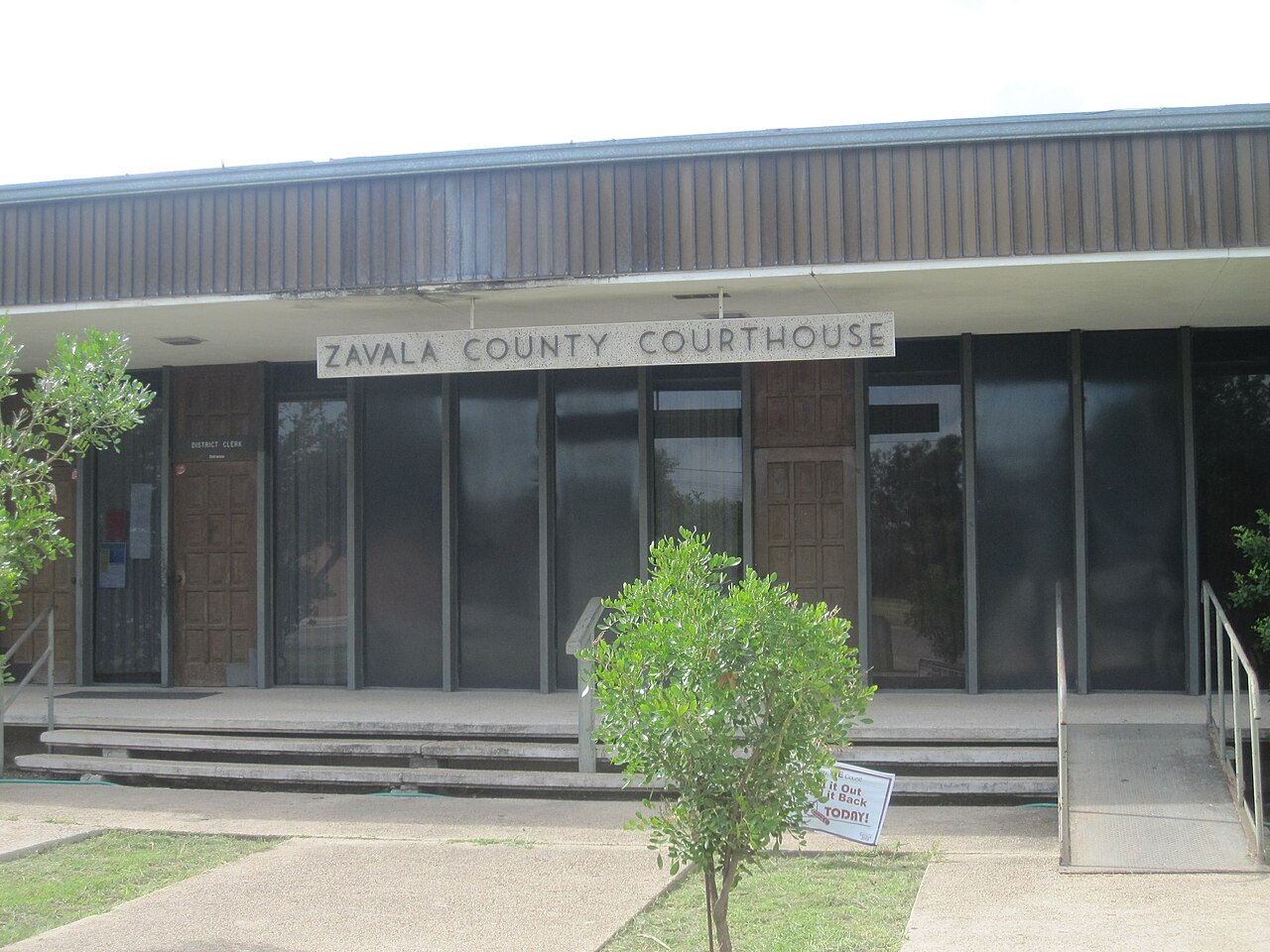Chapter 7 and Chapter 13 bankruptcy
Chapter 7 and Chapter 13 bankruptcy in Houston Texas. Outlined below are the instructions used to prepare your bankruptcy schedules. This is the internal procedure used by my law firm in training and preparing my staff to prosecute your case. This procedural manual was written by Sandi Barnett, my office manager and senior paralegal.
INSTRUCTIONS TO INPUT AND PREPARE SCHEDULES FOR CHAPTER 7 AND CHAPTER 13
|
G |
GENERAL INFORMATION
Enter Debtor’s name, address, mailing address, social security number, chapter, marital status, and individual/joint filing.
**shortcut** By clicking on the “copy” tab that is next to the mailing address, the system will automatically copy the address and you can click on the “paste” tab to enter the debtor’s address if it is the same. This also works for pasting addresses to the co-debtor.
CONTACT/MISC
Enter the debtor’s phone numbers and email address (if applicable)
ALIAS
Enter any names the debtor or co-debtor has been identified as. This will include maiden names, nicknames and trade names.
EXHIBIT D
This tab is for the credit counseling. Check No. 1 if the debtor has completed the credit counseling course.
|
B |
PRIOR/PENDING BANKRUPTCIES
Check Pacer for prior bankruptcies. If you have a co-debtor, make sure you check both debtors.
Be sure to indicate if case was dismissed or discharged and date.
**example** So. District of TX (Houston) dism 1/10/2011 or disc 1/10/2011
|
F |
DISCLOSURE OF COMPENSATION
Click on Fixed Fee (unless the contract indicates it is an hourly case).
Use “official 2016(b) form.
Chapter 7 calculation
Begin with total fees per contract. Deduct $306 filing fee, $49 credit counseling, $19 2nd class credit counseling PER DEBTOR AND $30 single credit report OR $50 for joint. The remainder is the amount of fees to be inserted in “total fees” and “amount paid” this will leave balance due of “0”.
Chapter 13 calculation
Fee per contract is $3500 this will go in “total fees” box. Deduct $281 filing fee, $49 credit counseling, AND $30 single credit report OR $50 for joint. The remainder will go in the “amount paid” box. The balance due should be the difference of the two.
Click on the “Add to Creditor List” in chapter 13 cases. This will put the balance due in the creditor section.
Click on the “Add to SOFA #9 in Chapter 7 and Chapter 13 cases. While you are in the SOFA, correct the date the debtor paid the fees.
While in this section of the SOFA you will also add Credit Infonet and indicate the amount paid for the credit report and the date will be the date it was pulled. (usually the date the client signs up).
|
D |
DEPENDANTS
Add dependants. You will include everyone that lives in the house that the debtor supports AND any children the debtor is paying child support on.
|
O |
OCCUPATION
Add occupation of debtor and spouse. Include address of employer , how long they have been employed and phone number. You must add occupation of spouse even if they are not filing.
If not employed, use Retired, Disabled, Unemployed, HomeMaker, student, etc. whichever is appropriate.
If the debtor or co debtor has a 2nd job, click Add an Employer and enter the information.
CREDIT REPORT
The credit report should be pulled at the time the client hires us.
Move Secured Creditors (house, car, recreation vehicle, equity loan, and some furniture accounts) to Secured Creditors. From the credit report you can estimate how delinquent the client is on the debt. When calculating the mortgage arrears, you will look at “Last reported date” and add mortgage payments for each month since last reported to the arrearage listed by the creditor.
Unsecured creditors will be most other creditors. If the creditor is collecting for another creditor, be sure to list “collecting for – ________” on the consideration line. By doing this you help the debtor identify the debt and also assist the Trustee’s office in identifying claims.
Do not transfer creditors with “0” balance.
You can also use the Credit Report to determine when a debt will pay off. This is useful information if the debtor is direct paying a secured debt as you will need to use variable trustee payments when you calculate the plan.
|
A |
ASSETS
Real Property – Schedule A
Nature of Interest will almost always be Deed of Trust”
Brief Description will be Homestead, Real Property, Burial Plot or TimeShare
The Trustees require the Extended description to include the legal address and the property address. You can obtain this information from the appraisal district.
Example:
| Legal Description: | TR 2A ABST 997 GC&SFRR CO SEC 1 |
| Property Address: | 2909 HILLCROFT SQ HOUSTON TX 77057 |
Use the appraisal value as the value of the property.
For Time Shares, if it is paid off, list the value and see if you can exempt it with the Wild Card. Most of the time, the Attorney will recommend the property be surrendered.
EXEMPTION
If it is their Homestead the default exemption is set to bring up the homestead exemption.
Do not use the homestead exemption on other property unless it is attached to the homestead property, i.e. an adjacent lot.
There is a burial plot exemption for State exemptions only. Use the wildcard for Federal.
LIENS
Click on(attach) the Secured Creditor and any taxes, 2nd liens and HOA fees due. Do not attach the mortgage arrears.
IF THE DEBTOR IS SURRENDERING THE PROPERTY – CLICK SURRENDER. (Make sure to unclick “include on Form 22C Disp Income (ch 13) on the Form 22C tab.)
STRIP LIEN – you can strip the 2nd mortgage, condo association or HOA arrears if the 1st lien exceeds the value of the property. See Eric or Sandie for verification it can be stripped. If strip can occur, you will make the Unser defined class of the creditor “4C” and pay value. Make sure to unclick “include on Form 22C Disp Income (ch 13) on the Form 22C tab.
Personal Property – Schedule B
BE VERY DETAILED!
Cash on hand – ask debtor for amount on person or laying around house the day they sign schedules.
Checking Accounts –
List all financial accounts the debtor is listed on. Include accounts with no balance that are still open, joint accounts, or accounts they have signed for a minor child, parent, etc. Include the last four digits of the account number : Chase Bank – Checking Account xxxx5555.
The debtor needs to provide the balances in all accounts at time of filing.
Household Goods & Furnishings
**the list of household goods is prepared and in a “personal property” file in SANDIE”S folder on the P drive. Copy the section you need and fill in blanks.
Books, Pictures , Antiques
Also include collections, CDs etc in this section.
Wearing Apparel
Make sure debtor fills it out for all members of the household. A per item value is not necessary, you can lump amount per family member, i.e. husband, wife, children.
Jewelry – make sure this is filled out. While debtor is in your office, be observant to what the debtor(s) are wearing.
Firearms, sports and hobby equipment
List guns separately and be specific on make and model. State exemptions will allow exemption of 2 firearms. Federal you will use Wild Card.
This category will include cameras, bikes, weight equipment, golf equipment, etc.
Life Insurance Policies
Always check with debtor for policies with the employer. These are usually forgotten if the Debtor isn’t paying for them. The entry should read “Group Life through Employer – no cash value”
Insurance debtor pays needs to indicate if it is Whole Life or Term Life and who the carrier is. Whole life will have a cash value and the debtor will need to provide you with this information.
IRA’s and Retirement – be sure to check for retirement through employer.
List 401k and TRS in this section. Debtor will need to provide a statement or balance amount.
Stock – list any stock the client owns. Ask for a statement for clarification.
If the debtor owns their own company or DBA, you will list this here as well.
Accounts Receivable – if debtor is self employed make sure you ask if any of his clients owe them money.
Alimony or Support – only list if the payor is in arrears.
Child support should read: Child support due from _____________ to be held in trust for minor child.
Other Debts Owed to Debtor –
This will include anticipated income tax refunds. You will normally begin listing this in October and carry thru June. Most taxes are prepared by this time.
#19 and #20 deal with Inheritance and interest in estates, death benefits, etc.
If the client answers YES to these categories, stop and get an Attorney.
Other Contingent or unliquidated claims – ask the client if they have the right to sue for wrongful termination from a job, discrimination, medical malpractice, accident, etc. There is verbage on the Personal Property sheet mentioned previously to be altered to the debtor’s situation.
License & Franchises – list all licenses or certifications other than drivers license. i.e. DCL, handgun, liquor, cosmetologist, teachers, nursing, etc.
Motor Vehicles and Accessories – list all vehicles that are in the debtors name. This will include any vehicle the debtor financed for another, spouse’s vehicle, co-signed vehicles.
Get retail value from NADA. Do not discount for mileage or add in options.
If the debtor disagrees with value, list the NADA value in description and why the debtor indicates value is less. Example – not running, does not work, no motor, no transmission, totaled.
If there is a Lien, make sure you attach the creditor to the vehicle on the Lien tab.
If the debtor is surrendering, click on surrender.
If the debtor says the vehicle is not theirs, that someone else drives and pays, you still have to list.
If the debtor is a co-signer on vehicle, surrender the vehicle. The individual that drives and pays the vehicle will assume full responsibility for the debt.
If the debtor financed the vehicle for another (son, daughter, brother, etc) list the vehicle and indicate that _______ is paying and has possession of the vehicle. Make sure you show the payment as a contribution on Schedule I (income) and the expense of the payment on Schedule J (expenses). You cannot put this vehicle in the Chapter 13 plan!!!!
Boats, Motors, Accessories – ask debtor if they have these items.
Aircraft and accessories – ask debtor if they have these items. If so, you might want to stop and get an attorney.
Office Equipment, furnishings and supplies – This is only for self employed individuals. Do not list home computer etc in this category.
Machinery, equipment and supplies – list all tools used in the business including vehicles used 100% for business (get the debtor to give detailed list)
Animals – include dogs, cats, fish, reptiles.
#33 and #34 – If the debtor lists farm animals, (horses especially) be sure to ask about equipment and feed associated with. These will go here. As well as tractors, etc.
Other personal property of any type. – you will list all property here that doesn’t fall into a designated category. If the debtor has a mobile home it will usually go here UNLESS it is financed with the land. A mobile home is crammable so be sure to discuss value with client.
|
E |
EXEMPTIONS
Always try to use the Federal Exemptions first. Go with the lowest “remaining non exempt”. If the Federal exemptions are greater, check the Wild Card to see if you can use it. Wild Card will exempt any non exempt property in the Federal exemptions. The Wild Card amount doubles in a Joint filing.
|
C |
CREDITORS
Secured Creditors –
For a Chapter 7 Case
For vehicles –
1st tab – Creditor Information
list year, make and model as the collateral and “retail sales contract” and the nature of
The lien. If the creditor is a Title Loan, this will go in nature of lien.
2nd tab – Intentions – list either surrender or reaffirm
3rd tab – list co-signers name and address, if applicable.
Skip 4th tab
5th tab – Select the type of debt: mortgage, vehicle 1, vehicle 2, other.
For vehicles use claim amount.
For Mortgages –
1st tab – Creditor Information
list Homestead, Real Property, Burial Plot or Timeshare as the collateral and “retail sales contract” and
Deed of Trust as the nature of
2nd tab – Intentions – list either surrender or reaffirm
3rd tab – list co-signers name and address, if applicable.
Skip 4th tab
5th tab – Select the type of debt: mortgage, vehicle 1, vehicle 2, other.
Use “contract payment by 60”
If there are property taxes and HOA dues, select the mortgage selection. To get this number, take the
yearly property taxes and multiply by 5 years. List this amount in Claim Amount.
For any other secured debt, use the claim amount.
For a Chapter 13 Case
For vehicles –
1st tab – Creditor Information
list year, make and model as the collateral and “retail sales contract” and the nature of
The lien. If the creditor is a Title Loan, this will go in nature of lien.
If the vehicle is to be paid in the plan, use 5.25 as the interest rate (prime + 2)
2nd tab – Plan – click on retain or surrender.
If the vehicle is to be paid directly, click this tab. Remember to add a direct pay to Schedule J as an
expense. You will also need to Step your Trustee payments if the vehicle pays off prior to the end of the
plan.
Click on the Section 1325 and Pay Claim if the vehicle was purchased within 910 days .
If the vehicle was purchased more than 910 days from filing, we can pay value of the vehicle.
*** to check if the vehicle is crammable, use DC calculator. Insert date vehicle was purchased and select
“Use this date” scroll down to the 910 date. This will be the date you can cram to value.
NOTE: if it is in the near future and the client can wait to file (no foreclosure or repo) speak with an
Attorney about waiting to file. In most cases this saves the client thousands of dollars.
3rd tab – list co-signers name and address, if applicable. If there is a co-signer, you will want to pay
Contract interest and claim. This will protect the co-signer. However, if the client doesn’t care about
protecting them (ex spouse) feel free to cram as long as client understands they can go after the other
party for the difference.
Skip 4th tab
5th tab – Select the type of debt: mortgage, vehicle 1, vehicle 2, other.
For vehicles use claim amount.
For Mortgages –
1st tab – Creditor Information
list Homestead, Real Property, Burial Plot or Timeshare as the collateral and “retail sales contract” and
Deed of Trust as the nature of
2nd tab – Plan – list either surrender or retain. If it’s the homestead you will also click Principal residence
and Real Property.
3rd tab – list co-signers name and address, if applicable.
Skip 4th tab
5th tab – Select the type of debt: mortgage, vehicle 1, vehicle 2, other.
Use “contract payment by 60”
If there is an arrearage, also click “Retrieve Amount from Arrearage Claim.
If there are property taxes and HOA dues, select the other selection. The claim amount will be the
annual obligation multiplied by 5 years. The arrearage claim will be the amount due today.
For any other secured debt, use the claim amount.
Priority Creditors
The attorney fees should be listed here. They should have been input when you did the Disclosure of
Compensation previously.
You will also include any Child support or IRS claims. Always make sure you select the correct type
of debt.
Form 22c – use claim amount.
Unsecured Creditors
Check with the debtor to make sure all creditors are listed. You can dispute any creditor over 4 years
of no payment or use and “0” out the amount.
Be sure to add the following in all cases: Attorney General of the US, Chexsystems, Telecheck and 3
addresses for the IRS.
Special Tab
The attorney will tell you if you need to put any creditor here.
|
E |
EXECUTORY CONTRACTS AND LEASES
Put the following in all cases:
“The Debtor opts out of all arbitration clauses in all contracts to which the debtor is a party at the date
of the filing of this bankruptcy.”
Ask debtor if they have any contracts for: cell phone, residential lease, rental furniture, gyms, dish, etc.
If the debt is month to month and there is no penalty for cancelling service, do not list here.
|
$ |
INCOME AND BUDGET
Debtor wage income tab
Once you have completed the spreadsheet for the debtors pay advices, use a 2 month average here.
Select the frequency of payment as Monthly.
If the debtor is a salary employee and the amount doesn’t change, you can take the information directly
from the pay advice and select the frequency of payment.
Debtor Other Income
List any other income received. If the Debtor has a 2nd job, give a 2 month average of the Net Pay.
You will also include any Social Security, pensions, rental income, roommate, family contributions.
COMPLETE THIS PROCESS FOR CO-DEBTOR OR SPOUSE.
Budget Tab
Chapter 13
If the mortgage is paid thru the plan, do not list it here. If the taxes and insurance are escrowed, click
YES as included in plan.
If the Car is being paid thru the plan, do not list as an expense.
Chapter 7
List all monthly expenses including mortgage and car.
If debtor is surrendering mortgage, list anticipated rent.
For anticipated changes in income or expenses in both Chapter 7s and Chapter 13s, list under
Anticipated Changes. In Chapter 13 cases, you can use this to explain variable payments and future
Anticipated income.
|
S |
STATEMENT OF FINANCIAL AFFAIRS
- List all gross income from employment. If the debtor is self employed, use the following format:
Business Income $
Business Expenses $
Profit/Loss from Business$
You will need to list YTD for current date and in Chapter 7 cases, the last 2 tax years. In Chapter 13 cases you will list last 4 tax years.
- Other Income – this will include income from pensions, sale of property, Social Security, Food Stamps, Family contributions and 401k/IRA distributions.
- a)Payments to Creditors – list any payments to creditors of more than $600 in the last 90 days.
c) payments to family or friends for the last 12 months.
- a)List any lawsuits including divorces. Be sure to list the attorney in the lawsuit in the unsecured creditors complete with the docket number as notice only.
b) property attached or seized as a result of the lawsuit
- Repo’s or Foreclosures
- Assignments and receiverships (usually associated with judgments) this option is rarely used. Gifts – churches or charities for the last 12 months. Be consistent with the amounts listed on the Means Test and Budget.
- Losses – due to fire, theft, gambling, storm damage in the last 12 months. Be sure to include any outstanding claims for hurricane damage from previous years.
- Payments for Debt counseling. This will include our firm, Hummingbird and Credit Infonet. Be sure to ask the client if they have paid any other attorneys or debt consolidation agencies.
- Transfers – transfers of any item in the last 12 months.
- Closed financial accounts – bank accounts, 401k etc closed in the last 12 months. In Chapter 7 cases, be sure debtor provides copies of statements for any accounts closed in the last 6 months.
- Safe Deposit Box – list any that the debtor is listed on, whether it be theirs or not.
- Setoffs – Any funds of the debtor that have been seized to pay a debt in the last 12 months. This includes wage garnishments and seizure of bank accounts.
- Property held for another person – any property being held in debtor’s possession that belongs to another. This will include company vehicles or vehicles that belong to someone else that the debtor is using.
- Prior addresses – list all addresses debtor has lived at for the last 3 years. Make sure to pay special attention to addresses out of state s these could affect the exemptions.
- Spouses and former spouses in last 8 years.
- Environmental Information – you will probably never use this one.
- Businesses – DBA, Corporations, Contract employment. List EIN or TID if client has one, dates business open and scope of business.
|
7 |
If the business is open and not being used, list and put “Not Generating Income”
INTENTIONS
This is for Chapter 7 cases only. Click all boxes.
|
13 |
CHAPTER 13 PLAN
The most important creditors in a plan are the mortgage, vehicles and Busby fees.
Mortgage
If paying thru the plan, you will pay the mortgage on Level 5 and choose “Long Term Debt” . Under
the fixed payment tab, insert the monthly Mortgage amount and copy forward. If the client has
documentation indicating the mortgage is to increase make sure you use the correct mortgage payment
in the appropriate months.
Mortgage arrears are to be paid on Level 3 and will be paid pro-rata.
Vehicles
Vehicles paid thru the plan are paid adequate protection at the rate of 1.25% of the VALUE. Pay on level
5 and under fixed payments, insert the adequate protection rate and copy forward.
BUSBY Fees
Pay on Level 5 as pro-rata. You will want to get fees paid as quickly as possible. Preference is less than
12 months. (less than 6 is ideal)
Other Secured Creditors
Property taxes are paid 12% interest thru the plan. Pay Level 4, pro-rata.
IRS Secured claims are paid 4% interest thru the plan. Pay Level 4, pro-rata.
Furniture stores, jewelry, Conns, etc. all receive Prime +2 (currently 5.25%) interest. These will also be
paid Level 4, pro-rata.
HOA does not receive interest thru the plan so pay Level 3, pro-rata.
Child support is a priority claim for arrearage, however, these can also be set at Level 3, pro-rata.
IRS claims that are priority, Level 1, pro-rata.
GENERAL TAB
The Trustee compensation is 5.95%.
Be sure to set the plan date for the date you intend to file the case.
The first payment should be 30 days from date of filing.
VARIABLE TAB
You will use this section to set variable payments for the plan. You will only use variable payments if the
debtor has a secured claim they are paying direct and it pays off during the plan. You can also use this
tool if the debtor needs lower payments in the beginning and anticipates an increase in income. Check
with the attorney for approval if you are thinking of using variable payments for this reason.
ESTIMATE TAB
This is a fantastic tool and will take most of the guess work out of determining the plan payment.
Using the “Estimated Plan Payment Needed” section, enter desired plan length which will usually be 60
months unless you have been instructed to do otherwise. The Desired Return to Unsecureds, you can
begin with 10% and adjust from there depending on the outcome of the Means Test. Click “Estimate”
and your plan payment will be calculated. You can then “apply and run” to see what the pay is to the
unsecured creditors. You will want to pay Unsecured Creditors between $1000 and $2000 unless the
Means Test determines otherwise.
Once you have determined the plan payment, go back to the General Tab and remove the change., and
press “run plan.
LENGTH TAB
This tab will tell you if the plan is feasible (met non exempt property requirements) and also the percentage to the Unsecured Creditors.
PLAN RESULTS TAB
Use this tab to check how quickly BUSBY is getting paid. Adjust plan payment if needed.
MEANS TEST
This may be the most important task you complete for your client.
When you enter the Means Test, the system will ask you if you want to update it. You should only have to update once. However, any changes to the case information will require an update when you re-enter the Means Test.
- Enter the correct information on the Debtor. Make sure you use the correct county. You will also insert the number of people in the household that the debtor supports. Children the debtor pays child support for can also be used, however advise the Attorney if you are doing so.
Number of vehicles operated are vehicles debtor has in their possession whether they hold title or not. DO NOT include vehicles that are being surrendered.
Number of vehicles for which an ownership/lease expense is claimed are vehicles that have a lien against them, whether it be financed, lease or title loan. You can also use vehicles here that are financed in another’s name, but that the debtor makes payments on. DO NOT include vehicles that are to be surrendered.
- MARITAL STATUS – this should be already selected for you. Exception is when a client is Separated. You will want to change the selection to “Married, not filing jointly, with declaration of separate households.
- GROSS WAGES – insert gross wages for the 6 months preceding the filing of the case. When reviewing the client’s pay advices, use the pay date, not period end date.
** create a spread sheet of pay advices. A form is located on the P drive in Sandie’s folder, subfolder “6 month spreadsheet”. Once you complete the spreadsheet, save it to this folder with the client’s last name then first name. Doing so makes it easier on anyone following your work on the case to access the spreadsheet if needed.
- SELF EMPLOYED – enter income (chapter 13) or income and expenses (Chapter 7).
** create a spread sheet of income and expenses. The client should have filled out our P&L form. A form is located on the P drive in Sandie’s folder, subfolder “P&L spreadsheet”. Once you complete the spreadsheet, save it to this folder with the client’s last name then first name. Doing so makes it easier on anyone following your work on the case to access the spreadsheet if needed.
- Rental Income – insert rent received by the debtor for rental income. You can use expenses of Mortgage payment, taxes, HOA or repairs on this section for the rental property ONLY IF the client actually paid them.
- Interest, dividends, royalties. These will be from Trust funds, stock etc.
- Pension, retirement. List gross amounts. DO NOT use Social Security or SSI payments here.
- Regular contributions to the household. Include roommates and child support. List what the debtor actually received in the case of Child Support, not the amount that was awarded.
- Unemployment – list all unemployment received for last 6 months.
- Income from all other sources. List family contributions, contributions for vehicle payment, food stamps 401 K cashouts (not loans), sale of stock, or any other funds the debtor has received in the last 6 months. Remember to use Gross amounts.
Click NEXT, NEXT. Now you should be at the page that determines disposable income.
#19 is Marital adjustment. If the client is married and not filing jointly, enter the amount of income listed previously on Line 10, Column B that is not regularly contributed to the household expenses. This will be funds the non filing spouse uses to pay their debts and expenses over and above the household expenses.
#21 is the projected annual income of the debtor per the income information provided.
#22 is applicable median family income.
IF THE PROJECTED INCOME IS LESS THAN THE APPLICABLE INCOME, YOU WILL STOP HERE AND THE DEBTOR CAN FILE A CHAPTER 7 OR A CHAPTER 13.
IF THE CLIENT IS ABOVE MEANS, THEY WILL HAVE TO FILE A CHAPTER 13.
#24A these are IRS standards for food, housekeeping supplies, apparel , personal care, etc. These allowances can be overridden, however, consult an attorney before doing so.
#44 Additional food and clothing expense. Clients will have to be able to demonstrate that the additional amount claimed is reasonable and necessary. The additional allowance is not to exceed 5% of the IRS standard.
#24B IRS STANDARD FOR OUT OF POCKET HEALTHCARE. Enter the number of people claimed at beginning of means test. Be sure to ask if any are over age of 65 as the allowance for them will be higher.
#25A Local standards for housing – non mortgage expenses such as utilities. This is another section that can be over-ridden but not advisable unless the debtors can give documentation supporting.
#25B Mortgage/rent expense. If the debtor has a mortgage, the monthly amount will appear here (provided you filled in Form 22 tab when you input the creditor). If the debtor rents, there is a standard amount for rent. The standard may be higher (good for debtor) or lower (bad for debtor) depending on what debtor pays. This standard CANNOT be overridden.
#26 Local standard adjustment. (Just don’t go there unless attorney advises)
#42 Home Energy Costs – enter total monthly average amount in excess of allowance specified. The Debtor must provide documentation of ACTUAL expenses and must demonstrate that the additional amount claimed is reasonable and necessary.
#27A Transportation standards. This is for operation of the vehicle, i.e. gas etc.
If the debtor doesn’t own a vehicle and uses public transportation, this can be overridden to insert the amount the debtor actually spends. – see attorney if you need to use this.
#27B Additional Public Transportation Expense – see attorney if you need to use this.
#28 Ownership/Lease expense. This amount will be 1/60 of balance of financed vehicle. If vehicle is paid in full, the IRS standard will apply.
#29 Ownership/Lease expense of 2nd vehicle. This amount will be 1/60 of balance of financed vehicle. If vehicle is paid in full, the IRS standard will apply.
#30 Taxes – use actual average monthly amount of taxes. These figures will be on your spreadsheet. Be sure to add federal, social security and medicare. If there is a co-debtor or spouse, add their taxes in as well.
#31 Involuntary Deductions for Employment – this will include MANDATORY retirement, TRS, Union Dues.
#32 Life Insurance Only include payments for debtor’s life insurance that they pay. Do not include Whole Life payments or insurance for children or spouse unless the spouse is a co-debtor.
#33 Court Ordered Payments . List monthly payments for child support, whether garnished or direct pay.
#34 Education for employment or a physically or mentally challenged child. If the debtor has to spend out of pocket for training pertinent to their employment, use those amounts here. You can also use expenses for special needs children here.
#35 Child Care – daycare or babysitter to include after school programs.
#36 Health care – Out of pocket expenses for co-pays, prescriptions, glasses, examinations, dental, over counter medicines, female products and vitamins. NOTE!!! If debtor has a Health Savings Account, be sure to deduct monthly amount for the HSA from the expenses and input the difference.
#37 Telecommunications. Home phone and internet – $19. Do not include cellular telephones or cable/dish services.
Click Next, Next.
#39 A. Health Insurance – insert the amount debtor pays monthly for health insurance from their pay advice.
If the debtor is self employed and pays for health insurance, use that amount here.
B. Disability Insurance – AD&D, LTD, STD, Cancer care or AFLAC
C. Health Savings Account – insert the amount debtor pays monthly for health savings account or
FLEX account from their pay advices.
#40 Continued contributions to care of household or family members. These are actual monthly expenses that debtor continues to pay for reasonable and necessary care of elderly, chronically ill, or disabled family members that cannot pay for such expenses themselves.
#41 Protection against Family Violence. The total average monthly expenses that debtor actually incurs to maintain the safety of the family under applicable federal law. The nature of these expenses is kept confidential.
#42 Home Energy Costs – enter total monthly average amount in excess of allowance specified. The Debtor must provide documentation of
ACTUAL expenses and must demonstrate that the additional amount claimed is reasonable and necessary. **If you input this information previously (after $26) the amount will carry forward.
#43 Education expenses for dependent children less than 18. These expenses are for attendance at a private or public elementary or secondary school by dependent children. Expense cannot exceed $147.92 per child and debtors must provide documentation supporting this expense.
#44 Additional Food and Clothing Expense. Clients will have to be able to demonstrate that the additional amount claimed is reasonable and necessary. The additional allowance is not to exceed 5% of the IRS standard. **If you input this information previously (after $26) the amount will carry forward.
#45 Charitable Contributions – enter amount reasonably necessary for debtor to expend monthly on charitable contributions. DO NOT include any amount in excess of 15% of gross monthly income.
Click NEXT , NEXT.
#47 Total of Av. Monthly Payment. This will be average monthly payments of secured debts. If the debtor pays Property taxes direct, you can add them as a creditor here and mark as a Means Only Creditor. You can also add HOA here and payments to family member or friend for vehicle financed that debtor makes payments on. BE SURE to mark as Means Only Creditors.
#48 Total Monthly cure payments. The system will calculate this from your secured creditors in the Creditor Section.
#49 Total of Avg. Monthly Payments. This will be average monthly payments on Priority debts.
CHAPTER 13 ADMINISTRATIVE EXPENSES
#50 Projected monthly Chapter 13 payment
From tabs above:
If a Chapter 7, use the first amount listed. “total (this amount will probably differ from the monthly net income from Schedule J)”
Chapter 13 , use “Plan Payment Amount (from Plan Calculator)”
Click the “override” and insert 5.95 in the % box.
Click Next, Next.
CHAPTER 13 CASES ONLY
#53 this is the total monthly income. (the amount will be calculated for you)
#54 Support Income. You can deduct any child support, foster care, or disability payments for a dependent child received and reported in Part 1 here.
#55 Qualified retirement deductions. Enter monthly expenses for voluntary 401k, 403b or loan repayments.
#56 Total of All Deductions Allowed (the amount is calculated for you)
#57 Deduction for Special Circumstances. BE VERY CAREFUL USING THIS SECTION
You can deduct up to $200 for a vehicle that is paid in full that is over 6 years old and /or 75,000 miles. Make sure you reflect this deduction on your Budget under “automobile repair and maintenance”.
If debtor is self employed, you will put the business expenses here. (be sure to use 6 month average)
#58 Total Adjustments to Determine Disposable Income (the amount will be calculated for you)
#59 Disposable Income
If this is a negative number, the client can file a Chapter 13 or a Chapter 7. If the number is positive, you will use this number multiplied by 60 months to determine what the debtor must pay the unsecured creditors.
Our toll-free telephone number is at 1-866-912-9832. You need to learn about all of your options including information about credit, debt, bill consolidation services and federal bankruptcy law. Please call us at 1-866-912-9832 so that we can discuss your case. You can also visit our web site: www.busby-lee.com. Our attorney fees are reasonable, competitive, and court- approved. It is important that you call us soon. Our office is conveniently located near the Galleria and Highway 59 on Hillcroft between Richmond and Westheimer. Call us toll-free at 1-866-912-9832 for directions to our office.
We provide bankruptcy services in the greater Houston metro area including the cities of Katy, Sugarland, Pearland, Friendswood, Clear Lake, Bellaire, Bunker Hill, Deer Park, Denver Harbor, Galena Park, Cypress, Jacinto City, Jersey City, La Porte, Missouri City, Pearland, Sea Brook, Stafford, Alief and Galveston. We also handle cases from The Woodlands, Spring and Tomball and cases in Baytown and Channelview.
We handle bankruptcy cases in all of these counties: Brazoria, Chambers, Galveston, Matagorda, Austin, Brazos, Colorado, Fayette, Fort Bend, Grimes, Harris, Madison, Montgomery, San Jacinto, Walker, Waller, Wharton
[paypal-donation]













